Boomslang
- December 6, 2023
- 0 comment
The Boomslang, scientifically known as Dispholidus typus, is a highly venomous snake native to sub-Saharan Africa. Renowned for its striking appearance and potent venom, the Boomslang is characterized by large, bulging eyes and distinctive keeled scales that give it a rough texture. Its coloration varies from bright green to brown, allowing it to blend seamlessly into its forested habitat.
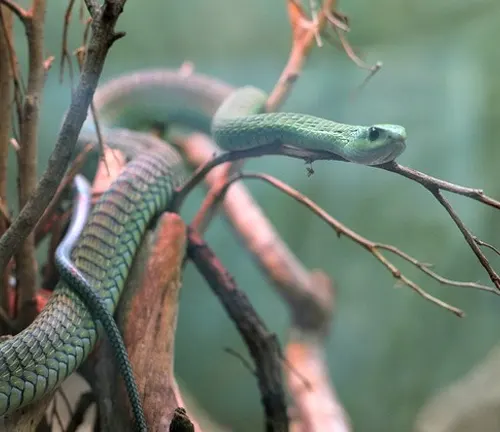
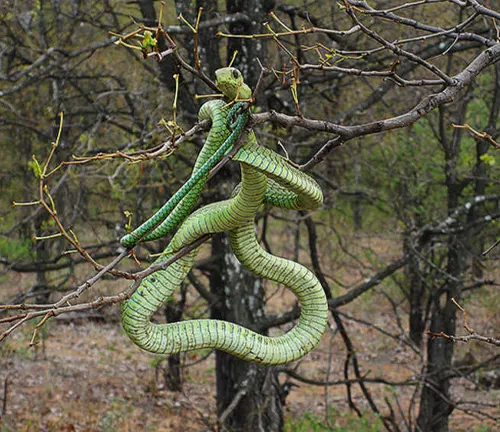
One of the unique features of the Boomslang is its exceptionally large, rear-fanged teeth, located at the back of its jaw. These fangs play a crucial role in delivering its hemotoxic venom, which can be lethal to its prey. Despite its venomous nature, the Boomslang is generally shy and elusive, preferring to stay hidden in the treetops where it hunts birds and chameleons.
Human encounters with this serpent are rare, and fatalities are infrequent due to its reclusive behavior. However, when provoked or cornered, the Boomslang can become aggressive, posing a threat to those who come in contact with it. Studying the Boomslang contributes to our understanding of the intricate ecosystems it inhabits and underscores the importance of conservation efforts to maintain the delicate balance of biodiversity in African regions.
| Characteristic | Description |
|---|---|
| Scientific Name | Dispholidus typus |
| Common Name | Boomslang |
| Family | Colubridae |
| Length | Up to 1.8 meters (6 feet) |
| Weight | Average around 150 grams |
| Venom Type | Hemotoxic (affects blood and tissues) |
| Fangs | Large, rear-fanged |
| Coloration | Variable, ranging from bright green to brown |
| Scales | Keeled scales, giving a rough texture |
| Habitat | Sub-Saharan Africa, predominantly in forests |
| Diet | Mainly birds and chameleons |
| Behavior | Generally shy and elusive; arboreal (tree-dwelling) |
| Venom Effects | Can cause bleeding, organ damage, and death in severe cases |
| Conservation Status | Not globally assessed, but some regional populations may be at risk due to habitat loss |
Botanical Beauty of “Boomslang”
The Boomslang, or Dispholidus typus, captivates observers with its botanical beauty. This striking snake, native to sub-Saharan Africa, boasts a vibrant array of colors ranging from bright green to brown, allowing it to seamlessly blend into the lush foliage of its forested habitat. The distinctive keeled scales give it a unique texture, adding to its aesthetic appeal. Despite its potentially lethal nature, the Boomslang’s visual allure highlights the intricate connection between the serpent and the diverse ecosystems it calls home.

Venomous or Not Venomous?

One of the primary mysteries surrounding the Boomslang lies in its venomous nature. The snake is equipped with large, rear-fanged teeth, delivering a potent hemotoxic venom. While its venom is undoubtedly a potent weapon for subduing prey, the Boomslang is not inherently aggressive towards humans. Unraveling the enigma of its venomous capabilities sheds light on the delicate balance of predator-prey relationships in the snake’s ecological niche.
Ecological Importance
Delving into the ecological role of the Boomslang reveals its significance in maintaining a balanced ecosystem. As an arboreal species, the Boomslang plays a crucial role in controlling populations of birds and chameleons. This predation helps regulate the balance within the intricate web of life in the forests of sub-Saharan Africa, emphasizing the interconnectedness of species within their natural environments.
Habitat and Behavior
Understanding the Boomslang goes beyond its physical attributes. The snake’s habitat and behavior are integral to its survival. Preferring the treetops, this elusive serpent relies on its ability to move stealthily through branches. Its reclusive nature and arboreal habits reflect a fascinating adaptation to its environment, providing insights into the evolutionary strategies that enable the Boomslang to navigate its surroundings.

Art And Culture
The Boomslang’s presence extends beyond the realms of biology into art and culture. In indigenous African folklore, the snake holds symbolic significance, often representing both danger and wisdom. Its inclusion in traditional stories and art showcases the cultural intertwining of humans and wildlife, emphasizing the need for harmonious coexistence.
Survival
Survival in the wild demands a keen understanding of the Boomslang’s adaptive strategies. From its cryptic coloration that aids in camouflage to its agility in hunting, the snake’s survival mechanisms have evolved over millennia. Exploring these aspects unveils the remarkable resilience of a species intricately connected to the ecosystems it inhabits.

Conservation
As human activities continue to impact natural habitats, the conservation of the Boomslang becomes increasingly vital. Habitat loss, pollution, and illegal wildlife trade pose threats to its existence. Conservation efforts are essential to ensure the Boomslang’s continued presence in its native environments, safeguarding the delicate balance it maintains within the broader ecosystem.
Common Food
The Boomslang’s dietary habits offer a glimpse into its role as a predator. Mainly feeding on birds and chameleons, the snake’s choice of prey reflects its arboreal lifestyle. Exploring the intricacies of its diet unveils the interconnected relationships between the Boomslang and its prey species, contributing to the overall biodiversity of its habitat.
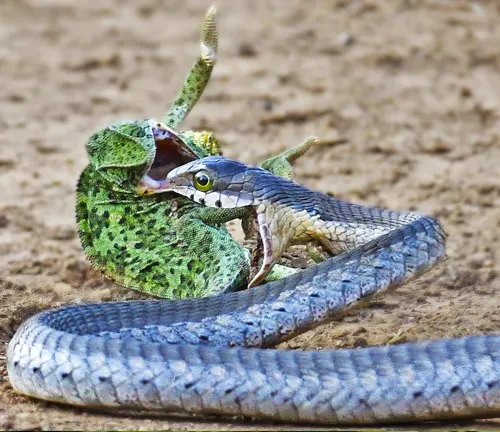
Benefits
Beyond its potentially intimidating reputation, the Boomslang provides certain benefits. By controlling the populations of birds and chameleons, the snake indirectly contributes to the health of the ecosystem. Understanding and appreciating these ecological contributions emphasize the importance of preserving the Boomslang and its role in maintaining the delicate balance of nature.
Different Species
The Boomslang (Dispholidus typus) is a monotypic species, meaning there is only one recognized species within the genus Dispholidus. As of my last knowledge update in January 2022, there are no distinct sub-species or recognized variations of the Boomslang.
Frequently Asked Questions (FAQs)
1. What is a Boomslang?
The Boomslang (Dispholidus typus) is a venomous snake native to sub-Saharan Africa. Known for its distinctive appearance and potent hemotoxic venom, it is a member of the Colubridae family.
2. Is the Boomslang dangerous to humans?
While the Boomslang is highly venomous, it is generally not considered a direct threat to humans. It is known to be a shy and elusive snake and rarely poses a danger unless provoked or cornered.
3. What does the Boomslang eat?
The Boomslang primarily feeds on birds and chameleons. Its arboreal nature allows it to navigate tree canopies, where it hunts its prey.
4. How venomous is the Boomslang?
The Boomslang possesses a potent hemotoxic venom that affects blood and tissues. While bites are rarely fatal to humans, envenomation can lead to severe illness, and medical attention is essential.
5. What is the habitat of the Boomslang?
The Boomslang is commonly found in wooded areas and forests in sub-Saharan Africa. Its arboreal behavior often leads it to inhabit tree canopies.
6. Can the Boomslang be kept as a pet?
Keeping a Boomslang as a pet is not recommended. They have specific habitat and dietary needs, and their venomous nature makes them challenging to handle safely.
7. How can I avoid a Boomslang bite?
Avoiding encounters with the Boomslang is the best prevention. If in an area where they are present, be cautious when reaching into areas where they may hide, and wear appropriate clothing and footwear.
8. Are there different species of Boomslang?
No, the Boomslang (Dispholidus typus) is a monotypic species, meaning there is only one recognized species within the genus Dispholidus.
9. What is the cultural significance of the Boomslang?
In indigenous African folklore, the Boomslang often holds symbolic significance, representing both danger and wisdom. It is sometimes featured in traditional stories and art.
10. Is the Boomslang endangered?
As of my last knowledge update in January 2022, the Boomslang is not globally assessed for conservation status. However, specific populations may face threats due to habitat loss and other human activities. Conservation efforts are crucial to preserving their natural habitats.


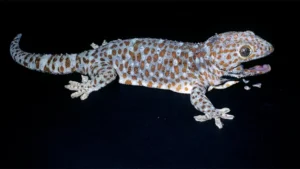
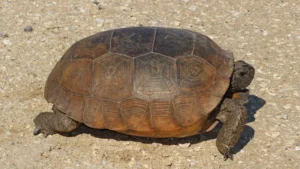
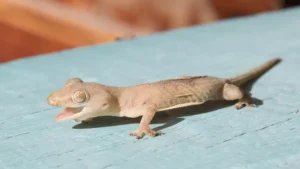



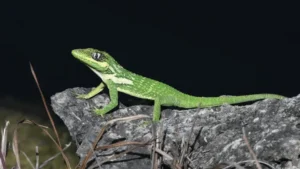
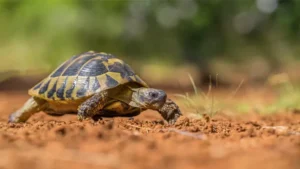
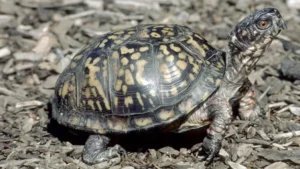

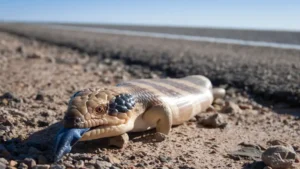
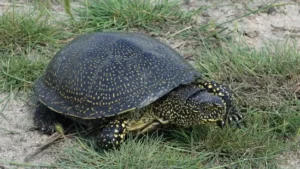
Leave your comment